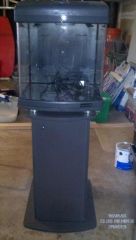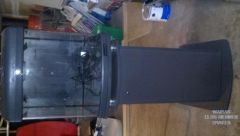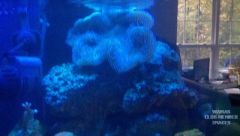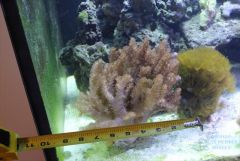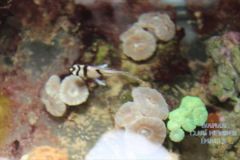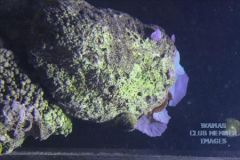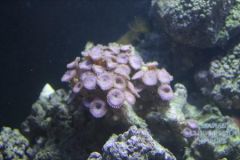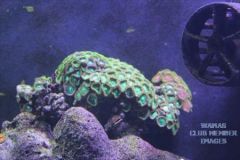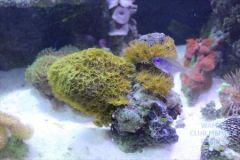
Scott_LM
BB Participant-
Posts
422 -
Joined
-
Last visited
Content Type
Profiles
Forums
Gallery
Events
Store
Everything posted by Scott_LM
-
The grounding probe does provide the difference of potential that is needed for electricity to flow. So does placing your hand in the tank. Without a path to ground your tank is the proverbial "bird on a wire". Wearing thick soled boots or rubber gloves will insulate thus not providing the ground(increase in resistance). Voltage also flows through people differently, ie if you have a cut on your finger you will feel the voltage more than if you didn't(the cut actually reduces your skins natural resistance). There are lots of arguments out there about the use of ground probes. I suggest using GFCI and ground probes, but that is just me David, Did I get that right? It has been a long time since I was a practicing electrician and the CDCs
-
Cleaner Shrimp are hermaphrodites, meaning you have 2 males and 2 females. They cannot self fertilize, but as long as you have 2 you should have shrimp larvae on a regular basis. I don't remember what their spawning frequency is off the top of my head, but at least once a month. That is the good news The bad news is they have no chance of survival in our systems. They are so fragile that pumps and water flow from pumps will kill them all quickly. Then you have to find the right foods for them. The others will be eaten by the other critters in the tank. Most experience breeders don't even bother because their larval stage is so long 100+ days and success is usually very poor. I believe our own Paul B successfully got one or two through meta. Peppermint shrimp are much easier.
-
I have had good luck in the past with InlandAquatics. They used to sell mated pairs of all sorts of fish for reasonable prices. It is best to email them as Morgan(I think is his name) is the manager and responds to emails. Note that many fish can be mated by just buying different sized juveniles. I have a pair of Orchid Dottybacks by just buying 2 and asking the vendor to send 2 small different sized fish. Most are very accomodating.
-
Who has PVC 1/2"x3/8" reducer bushing locally?
Scott_LM replied to bcjm's topic in General Discussion
3/8 PVC is not a standard size... at least not as far as HD/Lowes is concerned. You may have to get creative or try to connect a standard PVC connector to a CPVC connector with epoxy or silcone. -
Sorry - was unaware of the previous post! Have not tried to replace any of the LEDs yet so can't say for sure. Doens't look like it would be too difficult given the right material.
-
In case it helps anyone in the club I bit the bullet and opened mine up today (voided warranty). I can answer questions, take pics or whatever.
-
Need someone with a spare 250w MH bulb to test my fixture..
Scott_LM replied to DepT's topic in General Discussion
If you are ever in the North Stafford area (by Lake ArrowHead) I have a bulb you can borrow. -
Is this a macro/mangrove/ATS-friendly forum?
Scott_LM replied to Decadence's topic in General Discussion
I would be interested in hearing a summary of what harm people think an ATS can do to a system??? -
You do not want a valve on the overflow unless you are doing a beananimal design or something similar where a siphon is created. In a typical gravity overflow system flow should be unobstructed, even reducing the 90 degree elbows helps. A valve on the return is a very good idea to allow you to scale the flow up or down depending on the need, -Scott
-
Wow, Reed's products are very expensive! Marinap, does the yield justify the cost? Do you have any comparison numbers between batches?
-
16 on 8 off
-
Good Luck! My opinions in red below. what are your opinions on OGP vs. otohime? I have no experience with either so? what is an aged sponge filter? An aged sponge filter is one that has bacteria already colonized on it. This can be done in the broodstock tank, but then you risk transferring unwanted organisms like hydroids, etc. Recommended approach is let it cycle itself, just provide saltwater, ammonia and the sponge with aeration and eventually it will be aged. You can also speed up the process with the bacteria in a bottle products. how long should i keep the lights on in the fry tank?\ I always used a 16/8 cycle, but it is more important that when it is dark in the larval tank there aren't other strong sources of light in the room as the larval are very phototrophic (attracted to light ). if i am get some fry, will agression become an issue? especially during grow out Agression will be an issue as the fry get older, especially with Maroons (so I hear, no experience with maroons). You should have months before this becomes a problem though. Add lots of PVC pyramids to the tank to help. what are the uptimum SGs for fry, nanno, brinehatching, and L-strain rotifers. Unfortunately the optimums are all different, but more important is staying with the tolerable swings each can survive. IE, rotifers do better at a lower salinity, but can't handle more than a .07 swing, I always tried to maintain a .1.020 salinity or there abouts. Rotifers can be a little lower, and if need be the broodstock can be higher. If I remember rotifers do best at around 1.014. should i be concerned with DHA enriching my rotifers with Iso etc... or will pure nanno do? Rotifers are only as good as the food you feed them. The question is how much time/expense do you want to put in to culturing many types of phyto. Nanno is easiest, and works for clowns. If you are doing this as a hobby and aren't trying to make money then stick with nanno or just get on the commercial rotifer feeds on the market. Iso can be very finicky.
-
My clownfish spawn again (3rd) one for these pair
Scott_LM replied to flooddc's topic in Propagation and Breeding
The larvae are phototrophic. The night they are going to hatch watch the tank until they start. once they do turn off ALL pumps so there is no water movement whatsoever. find the smallest flshlight you can find and shine it at the top of the water column. The larvae will be attracted and slowly swim to the surface. Once they are congregated enough dip them out with some sort of container. DO NOT use a net! Larvae are very fragile and can't swim well. You can siphon them as well but it needs to be slow. Like Coralhind suggested larval snaggers are easy to use and effective. They also free up a lot of your time as it can take a while for all the eggs to hatch. When you try to grow out the larval make sure the tank ( or whatever) is lit from the top and the sides/bottom are totally blacked out( even heater lights should be taped with black electrical tape). It is also good to tint the water green with phytoplankton as it diffuses the light. If the larvae are all at the top the light is not strong enough, if at the bottom the light is too strong. They should be dispersed through the water column. If you get this far we can discuss feeding next -
The CDCs I took never went over power factor, that is something I had to learn later in life. Are you AF?
-
6 T5 at 39W a piece puts you at 234Watts 175W MH puts you at 175 WATTS Now what I don't know is the effiency and power factor of your ballasts. If you look at the label on your ballast it normally identifies input voltage and amperage. P=IE is the equation you are looking for to figure out Watts, Watts = Current x voltage, but the values need to be plugged in from the specs on the ballast, not from the bulb. Generic overview of how you figure it out, if you want to get a more in depth answer you will need to post pics of you ballast labels. HTH Scott
-
How long before Bangai Cardinals start schooling?
Scott_LM replied to steveoutlaw's topic in General Discussion
The longsping or blue-eyed cardinals school nicely. They are out and about most of the day and at night as well. http://www.liveaquaria.com/product/prod_display.cfm?c=15+26+1428&pcatid=1428 I have seen no aggression from mine, but I don't have seahorses so.... Agree, Pajamas are ugly. -
How long before Bangai Cardinals start schooling?
Scott_LM replied to steveoutlaw's topic in General Discussion
They normally don't, actually just the opposite. The largest male with harass/kill the other males once mature, There have even been reports of females harassing other females. Bangaiis are not like the blue eye or pajama in that regard. -
Harbor Freight sells them for relatively cheap.


